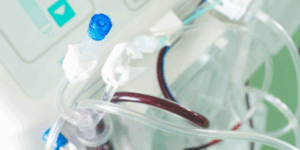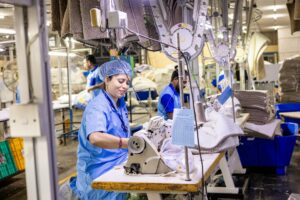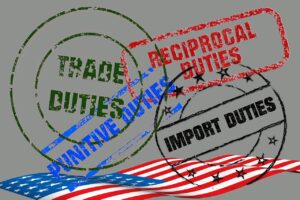The current USMCA agreement establishes measures that support the medical device manufacturing industry and exports through precise regulatory alignment and tariff benefits. Notable improvements, such as a complete duty-free allowance for qualifying products, unified criteria, reduced costs, and a single audit system, promise to contribute to the sector’s thriving growth.
Other key elements, such as near-shoring and evolving intellectual property policies and enforcement, add to an already close ecosystem along the United States-Mexico border. Customs and logistics are fields that will also greatly benefit from the current state of affairs.
In this context, it is essential to partner with reliable and ready-to-comply Original Equipment Manufacturers. RexMed, with its solid presence in the El Paso del Norte Borderplex region, can provide immediate adherence to the new market demands.
How USMCA Reshaped Medical Device Trade in North America
The new treaty for USMCA medical devices has reshaped the medical device trade in three main ways:
- It has strengthened the protection of Intellectual Property. Intellectual property rights protection helps foster innovation and creativity, benefiting both customers and manufacturers. The protection of trade secrets and a robust enforcement body are among the key measures in this aspect.
- It has eliminated tariffs for compliant equipment. One of the most popular economic measures of the current USA administration is tariffs. However, medical equipment produced in either of the North American countries that adheres to the current regulations will gain access to duty-free trade, avoiding the need to pay tariffs.
- It has near-shore production of supplies. Under the current agreement, Mexico has emerged as a competitive, productive hub. Since the forging of raw materials and parts is now part of the entire production and assembly chain, it no longer has to be done overseas.
As the successor to the previous North American Free Trade Agreement, the USMCA will contribute to strengthening the relationship between its members through the supply chain.
Streamlining Regulatory Compliance Across Borders
The harmonization of standards for USMCA medical devices has notable benefits for the healthcare device industry. Among them, we find the simplification of trade, which is ultimately a fundamental purpose of any free trade agreement. By establishing a unified set of rules that producers must follow, trade restrictions are waived, and the entire process becomes more efficient.
Another aspect that benefits from regulatory alignment is audits and surveillance. Namely, the need for these is drastically reduced, and fewer resources must be allocated for these purposes, as both producers and equipment become more compliant. In the medical field, USMCA establishes a system known as the Medical Device Single Audit Program, which allows for a single audit requirement for all member countries.
Challenges remain, as national regulatory entities must unify their criteria for acceptance, authorization, and commercialization; however, the newest agreement sets the infrastructure for greater unification.
Customs and Logistics Efficiencies for Medical Exports
Customs and logistics for USMCA medical devices have also been improved compared to previous arrangements under the NAFTA agreement. Moreover, thanks to the participation of medical manufacturers in development clusters like the Borderplex zone, it is easier to synchronize efforts across borders.
Among those producers, we find RexMed, which has a presence in both Ciudad Juárez, Mexico, and El Paso, Texas, ensuring seamless communication throughout the various stages of the process. By improving and speeding up cross-border manufacturing, it aligns perfectly with the USMCA’s intent.
On one hand, Intellectual Property concerns are mitigated, and logistics are streamlined as required by the treaty. On the other hand, material sourcing is allocated within the subcontinent, and the entire building process remains within the territory as well, by fostering device export from Mexico.
All the previous elements contribute to reducing overall economic costs, improving speed, fostering innovation, and enhancing overall satisfaction for both clients and manufacturers. In short, the exchange process is made much easier for medical exports by facilitating not only the productive stage but also logistics, customs, and border affairs.
Tariff Reduction and Its Competitive Impact
Tariff reduction under the USMCA benefits Original Equipment Manufacturers, thanks to the cost efficiencies inherent in the treaty. The main element in this category is the total waiving of tariffs for products that are entirely compliant with either one of the following requirements:
- The source of materials. The materials are produced in the member countries.
- The source of fully finalized products. The finalized products are built entirely from materials originating in one of the three member countries.
- Substantial modifications within the participating territories. The final product originates somewhere else, but it is subject to substantial modification in either of the member countries.
- Compliance with local requirements. The products are built from non-member State materials and don’t undergo any substantial modification but comply with the specific cost and content requirements for the member country of destination.
The burden of proof of fulfilling these criteria lies with the importing party, and the status can be maintained for up to 5 years.
This opportunity represents a significant comparative advantage for non-member manufacturers and therefore contributes successfully to increasing trade within the region.
RexMed’s Position as a USMCA-Ready Manufacturing Partner
Under the provisions for new USMCA medical devices, RexMed positions itself as a USMCA-ready producer, enabling immediate compliance with the latest regulations. This is possible thanks to the company’s bi-national setup, which grants it a presence in both the United States and Mexico, particularly in key border locations.
Not only that, but logistics have also been dramatically improved, and the reduced distance and costs allow for substantial delivery advantages. This is especially relevant in the current context, in which the USA health equipment industry is “heavily reliant on imported components from Mexico”.
For cutting-edge technology developers, such as the health industry medical device manufacturers, the increased protection of Intellectual Property is also a preponderant asset. The protection of trade secrets and the straightforward adjudication of patents encourage the development of innovative solutions for the ever-growing needs of the field.






